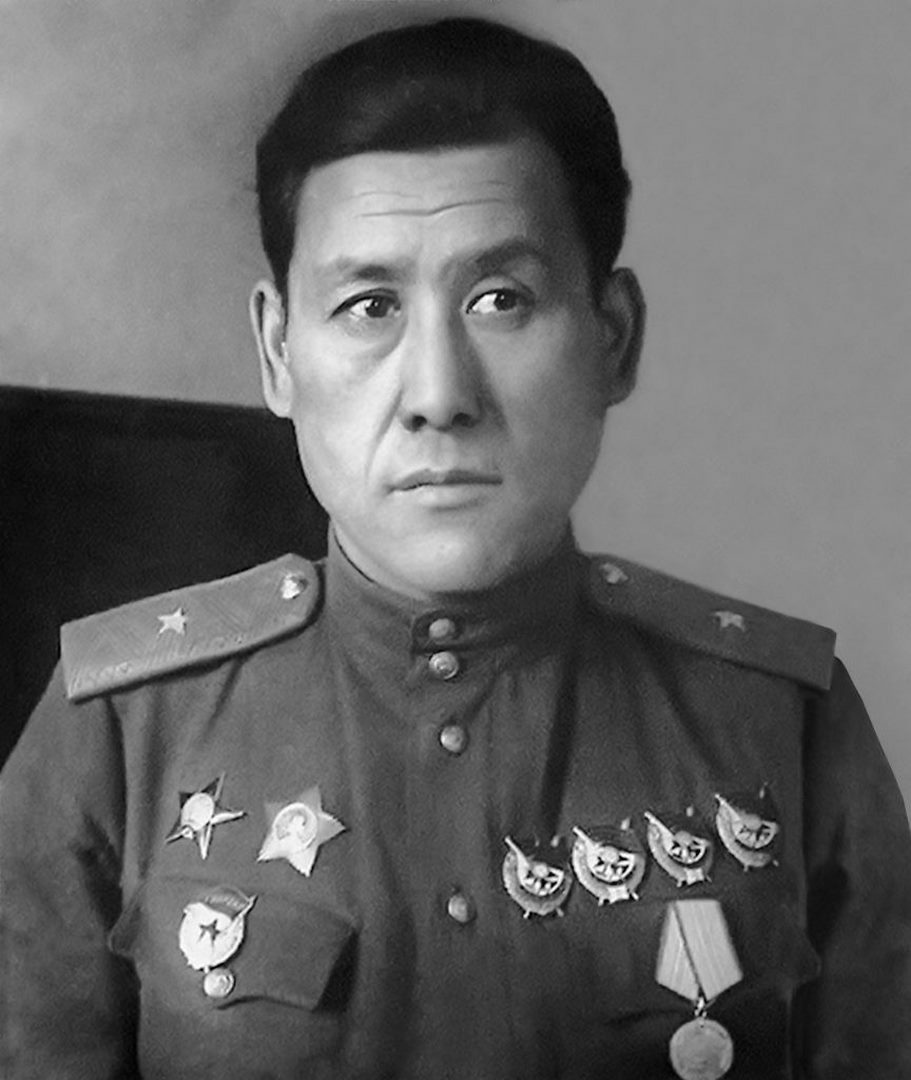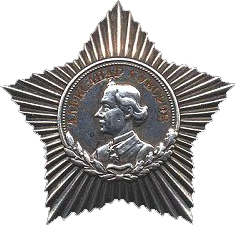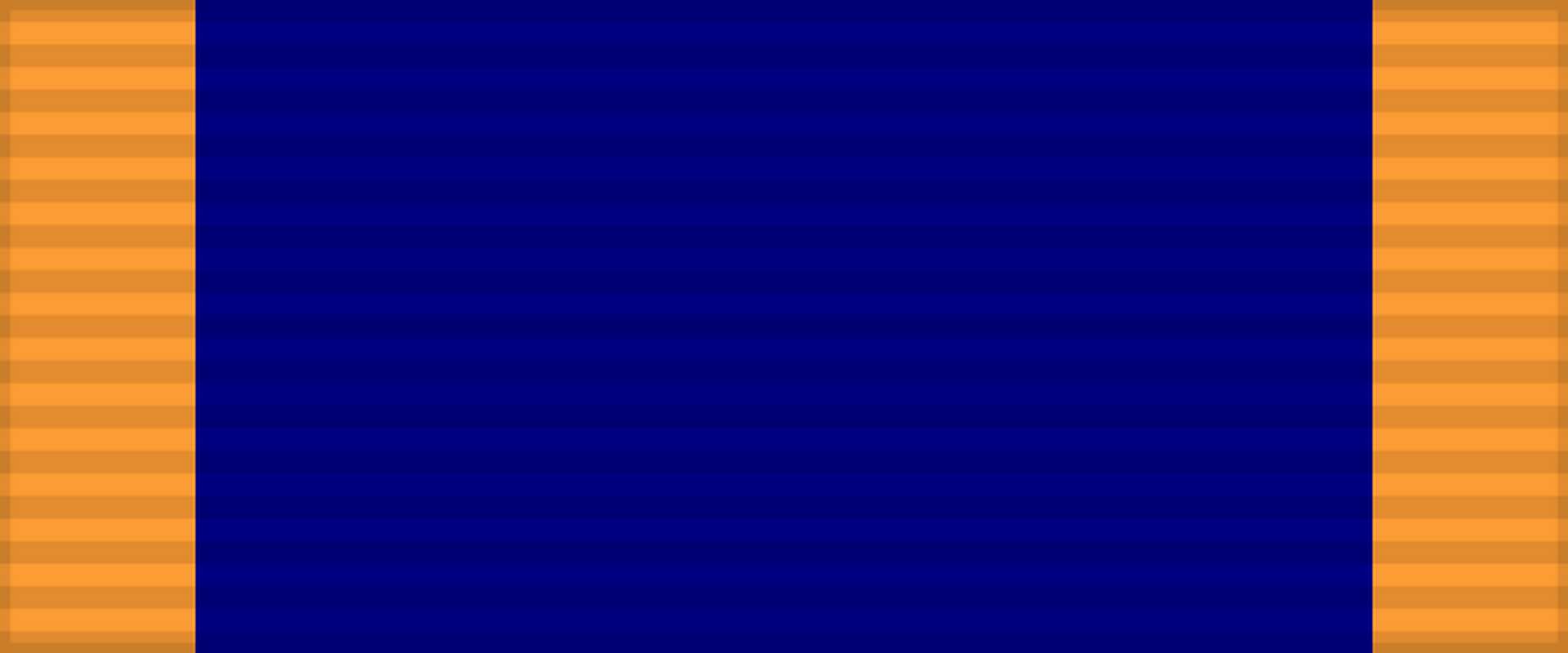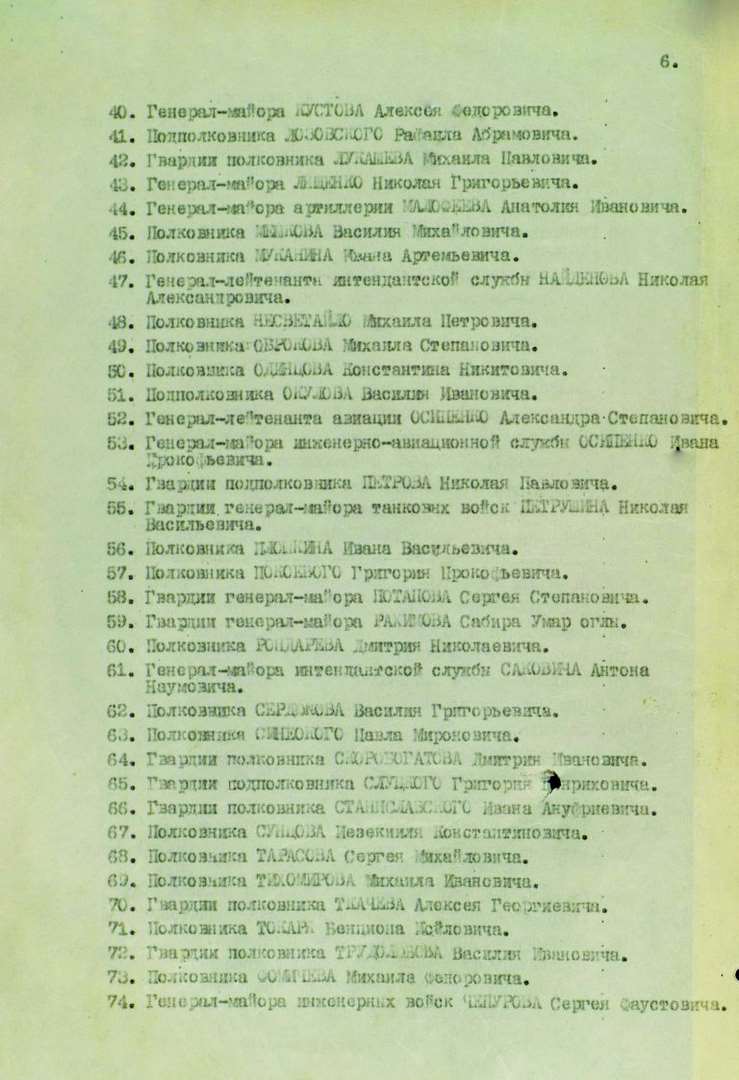
RAHIMOV SOBIR UMAROVICH (01.01.1902-26.03.1945)
Rahimov Sobir Umarovich was born on January 1, 1902, in the Kirov district (now Yunusabad) of Tashkent city, in the family of a mill worker.
In 1910, he began his education at an old-town school in Tashkent and graduated in 1915. That same year, he started working as a cattle herder in the household of a wealthy Uzbek. From 1917 to 1919, he lived in an orphanage, and in 1919–1920, he studied agriculture and worked in the field. From 1920 to 1922, he continued his labor in the Tashkent textile workshop.
In 1922, he voluntarily joined the Workers’ and Peasants’ Red Army, and on September 1 of the same year, he was admitted to the United Military School in Baku, Azerbaijan Republic.
For his achievements in military training and equestrian skills, he received a commemorative gift—a bronze horse statue—from M.V. Frunze. On August 7, 1925, he successfully graduated from the Baku Military School and began his military career as a platoon commander in a separate Uzbek cavalry division stationed in Karshi.
From 1927 to 1930, he served as a platoon commander in the 1st Uzbek Cavalry Regiment, part of the 6th Uzbek Cavalry Brigade of the Central Asian Military District in Samarkand. From 1930 to 1933, he attended officer training courses in Moscow to improve his qualifications.
In 1936, he was appointed Chief of Staff of the 42nd Cavalry Regiment in Samarkand. On March 20, 1938, he was discharged from the army into the reserve, but on November 19, 1939, he was reinstated with an officer’s rank and reassigned to the Red Army. He was appointed head of the combat training department of the OSOAVIAKHIM organization in Tashkent region.
In 1936, he was awarded the Order of the Red Star for his contributions to establishing Soviet power in the Central Asian republics. From 1939 to August 1941, he served as the deputy commander of the 104th Motorized Regiment of the 104th Tank Division.
Sobir Rahimov rose from a platoon commander to a division commander, passing through a long and honorable military path. His first battles as a deputy regiment commander took place near Yelnya. From 1941, he commanded an infantry regiment and began operating independently. In one of the battles in 1941, he was wounded and sent to a mobile hospital in Zheleznovodsk.
After recovering, on October 20, 1941, Sobir Rahimov took command of the 1149th Infantry Regiment of the 353rd Infantry Division on the Southern Front. On May 1, 1942, he was promoted to deputy commander of the 353rd Infantry Division. For his bravery, determination, and sense of duty, on August 1, 1942, he was appointed commander of the 395th “Shakhtyor” Infantry Division on the North Caucasus Front. Under his command, the division destroyed about eight thousand enemy officers, soldiers, and military equipment.
For his combat bravery, on February 10, 1942, Sobir Rahimov was promoted to lieutenant colonel, and six months later, to colonel.
While liberating cities such as Kuban and Krasnodar, he demonstrated outstanding courage and bravery, for which, on March 19, 1943, he was promoted to the rank of major general and awarded the Order of Suvorov, 2nd Class.
In the summer of 1943, he was sent to Moscow for further military education at the Military Academy. In a letter to his wife Munira Rahimova, dated October 1, 1943, he wrote:
“For ten days, I have been taking exams, which is why I couldn’t write. You can congratulate me—I have passed all subjects successfully. To be honest, at first, I was afraid I wouldn’t manage. But I pulled myself together and worked continuously, sleeping only two hours a day.”
After completing his short-term training, he resumed command, leading the 37th Infantry Division. Under his leadership, this division fought on the First and Second Belorussian Fronts, participating in battles from Baranovichi to Bialystok, leaving its mark on the history of World War II.
Between January and March 1945, his division fought in battles in several cities along the lower reaches of the Vistula River, including Mlawa, Dzialdowo (Soldau), Plonsk, Gnev, Starogard, and Grudziądz.
The decisive battle for Grudziądz was led by Rahimov’s 37th Infantry Division. Nazi Germany’s trusted general Ludwig Fricke, along with more than five thousand officers and soldiers, was captured.
In honor of this victory, an order from the Supreme High Command was read in Moscow, and a 20-gun salute was fired in honor of Rahimov’s division.
Rahimov’s last battle took place on the outskirts of the major Polish port city of Danzig (Gdańsk). On March 30, 1945, the city was completely liberated from Nazi occupation. Over 10,000 enemy soldiers and officers were taken prisoner, along with 140 tanks, 358 field artillery guns, 45 submarines, and numerous other weapons and military equipment. The Polish national flag was raised over the city.
Unfortunately, General Rahimov, who had heroically led his division in all battles, did not live to see the ultimate victory. He was gravely wounded in these battles.
The 65th Army Command issued a statement on March 27, 1945, which read:
“On March 25, a 119-mm mine explosion at the division’s observation post killed political department chief Colonel Smirnov and division communications chief Colonel Golovanov. At that moment, Major General Rahimov was seriously wounded.”
On March 26, 1945, he passed away in the hospital without regaining consciousness.
After the war, his remains were transferred to Tashkent, where he was reburied in the Brotherhood Cemetery.
Colonel General Pavel Batov recalled Rahimov’s heroism:
“Rahimov’s vanguard unit was advancing towards Danzig. Three kilometers from the city, he reported via radio that he had reached the forest edge for artillery observation and that the city would be captured today. However, he did not live to see Danzig’s fall—on March 26, he was fatally wounded by enemy shelling.”
For his military achievements, Sobir Rahimov was awarded the Orders of the Red Star and the Red Banner, as well as the Orders of Suvorov and Kutuzov. In 1965, he was posthumously awarded the title of Hero of the Soviet Union.
His legacy has been immortalized through numerous monuments, books, films, and memorials.




































